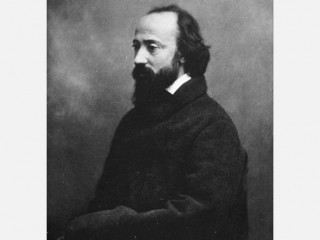
Charles-François Daubigny biography
Date of birth : 1817-02-15
Date of death : 1878-02-21
Birthplace : Paris, France
Nationality : French
Category : Arhitecture and Engineering
Last modified : 2011-02-08
Credited as : Artist painter, and etcher, Barbizon school
The French painter and etcher Charles-François Daubigny, a member of the Barbizon school, was one of the first landscape painters to work out of doors in a systematic way.
Charles-François Daubigny was born in Paris on Feb. 15, 1817. His father, Edme Francois Daubigny, was a landscape painter, and his uncle and aunt were miniaturists. Daubigny made the customary trip to Italy (1835-1836) and did some ideal landscapes, but his eventual direction was more decisively shaped by Dutch landscape painting. In 1838 he enrolled as a student of the academic painter Paul Delaroche.
Although Daubigny enjoyed a reasonable success at the Salons, where he exhibited from 1838 on, graphic art in the form of etchings, woodcuts, lithographs, and illustrations contributed substantially to his income. Pond with Storks (ca. 1851), with its painstaking analytical detail, is a representative Barbizon school work; it also echoes Dutch art of the 17th century. Some of Daubigny's rarely seen drawings, such as River Landscape (ca. 1860), have an astonishingly light, airy, and evocative touch.
Daubigny painted in the forest of Fontainebleau near Barbizon, along the rivers of northern France, and on the coast. He assimilated many sources and worked in many different manners. The Pond of Gylieu (1853), balanced, meticulous in execution, and suffused with soft light, was a particularly popular picture. The Lock at Optevoz (1859), done in blocky masses and heavier impasto, is reminiscent of Gustave Courbet. Daubigny's Banks of the Oise (ca. 1860), which is more delicate and luminous, gives a foretaste of Alfred Sisley. In contrast, the heaviness and dark greens of Landscape near Pontoise (1866) call to mind the work of Camille Pissarro. Intimate forest pictures such as Landscape (ca. 1877), executed in softer greens with a fluttery touch, illustrate the persistence of Camille Corot's influence.
Daubigny, whose work was considered to be too much a matter of "impressions," gave help and encouragement to Claude Monet, who followed him even in the practice of using a houseboat as a floating studio. Daubigny visited England and the Netherlands in 1870-1872. He died at Auvers-sur-Oise on Feb. 21, 1878.
Lacking the boldness and imagination to be a major artist, Daubigny was a hardworking, conscientious craftsman who never stopped looking at art and nature and who never stopped producing fresh and appealing pictures—along with some that were dull, flat, and routine. Historically, his role was to bridge the gap between the popular but fading Barbizon school and the more audacious and original impressionist school.
Most of the literature on Daubigny dates from the 19th and early 20th centuries. David Croal Thomson, The Barbizon School of Painters (1902), is a representative work. Robert L. Herbert, Barbizon Revisited (1902), is a catalog of an important exhibition organized in part by the Boston Museum, and a thorough account of the whole movement. John Rewald includes some useful material in History of Impressionism (1946; rev. ed. 1961).
















